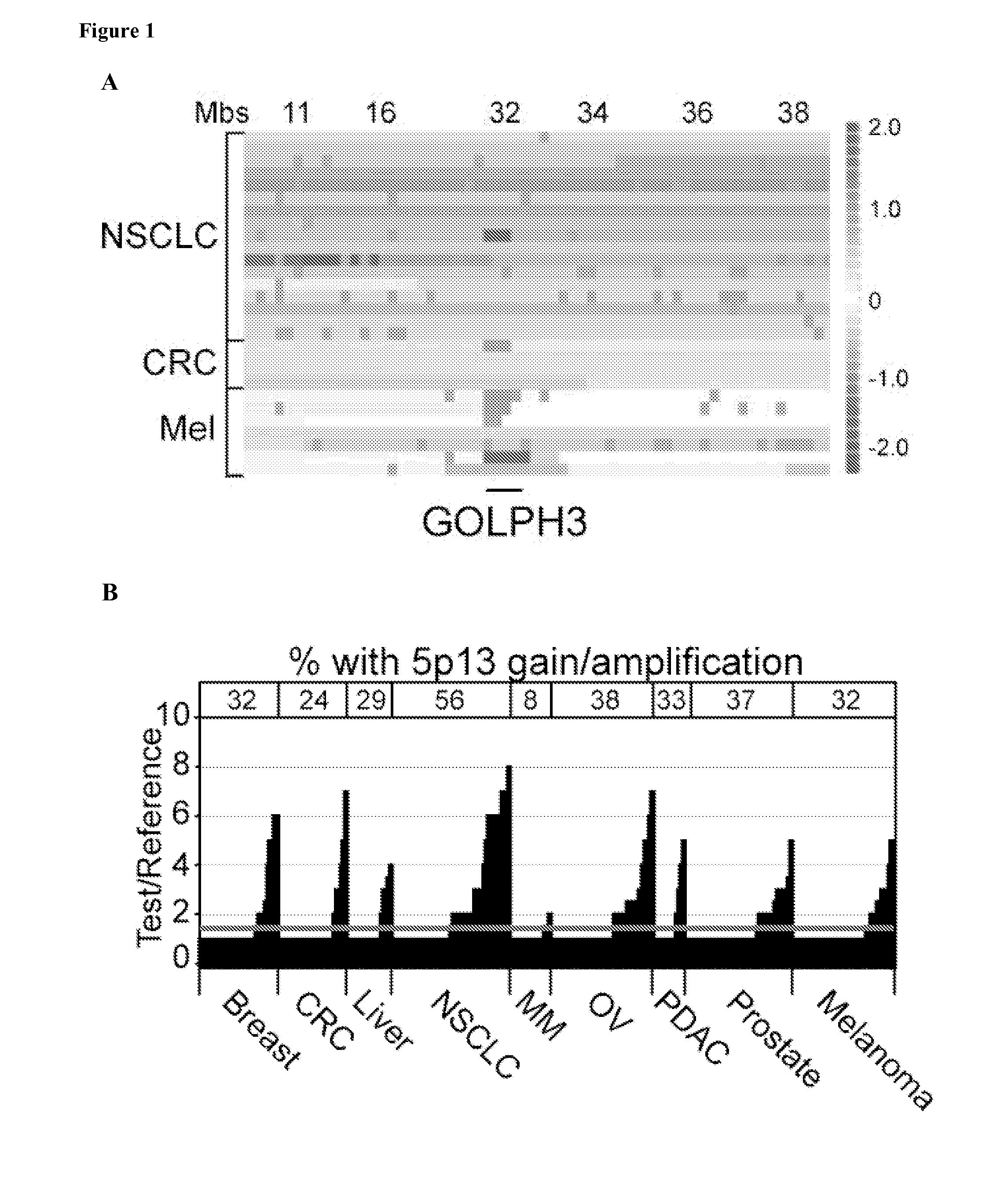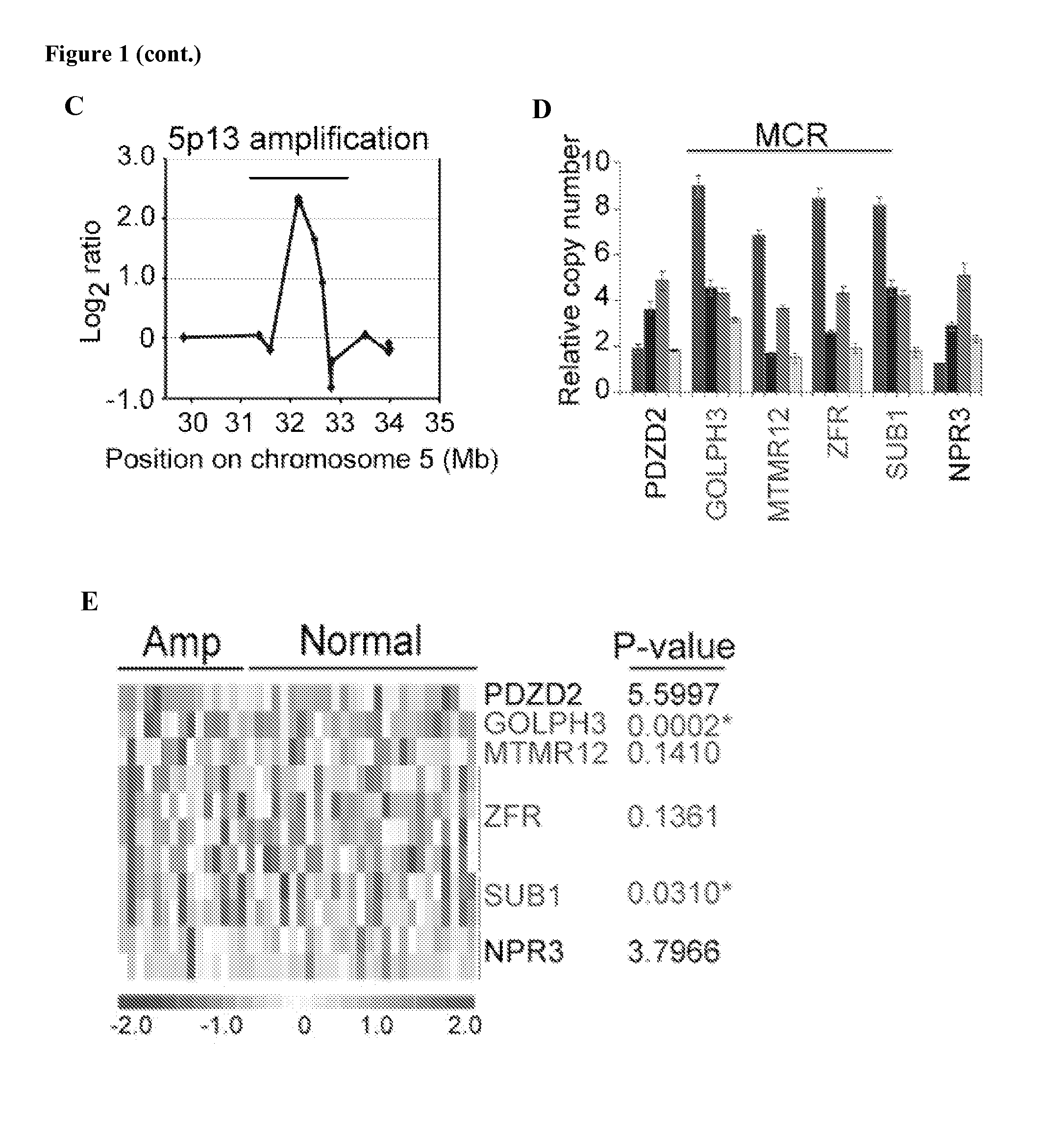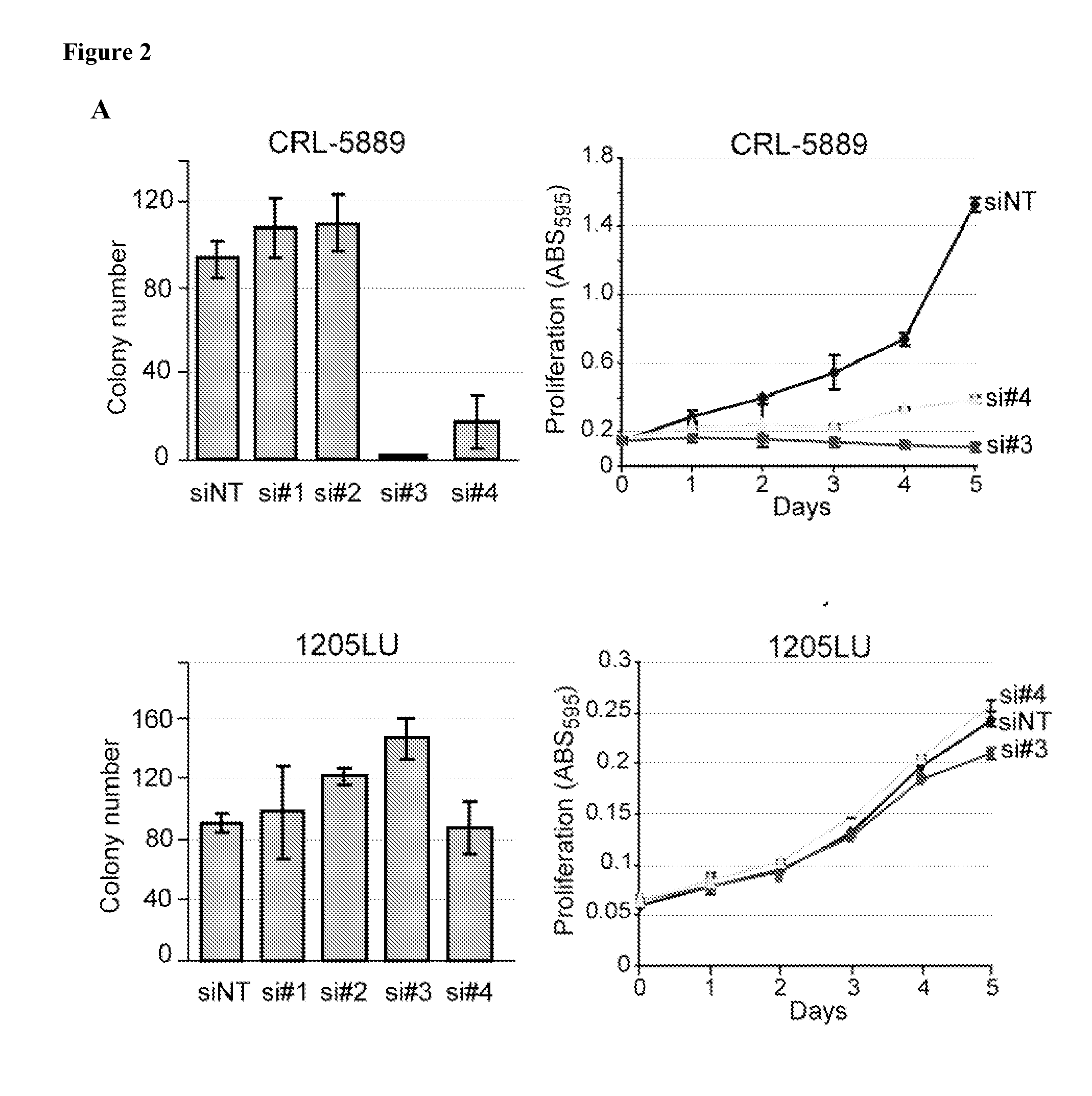Compositions, Kits, and Methods for the Diagnosis, Prognosis, and Monitoring of Cancer Using GOLPH3
a technology of cancer prognosis and golph3, applied in the field of compositions, kits, and methods for the diagnosis, prognosis, and monitoring of cancer using golph3, can solve the problem that the approach does not identify conserved genetic elements among samples derived from non-identical cancers
- Summary
- Abstract
- Description
- Claims
- Application Information
AI Technical Summary
Benefits of technology
Problems solved by technology
Method used
Image
Examples
example 1
Materials and Methods used in Examples 2-9
[0274]A. Cell Lines
[0275]All cell lines were propagated at 37° C. and 5% CO2 in humidified atmosphere in RPMI 1640 Medium (Invitrogen, Carlsbad, Calif.) supplemented with 10% heat-inactivated fetal bovine serum (FBS). CRL-5889, SK-MEL-5, 1205LU, A549 and 293T were obtained from the American Type Culture Collection. MALME-3M was obtained from the NCl cell line panel of the National Cancer Institute-Division of Cancer Treatment and Diagnosis repository. Sbc12, WM239A and hTERT / CDK4(R24C) / p53DD / BRAFV600E melanocytes (HMEL) have been described before (Satyamoorthy et al. (1997) Melanoma Res 7 Suppl 2: S35-S42; Garraway et al., (2005) Nature 436: 117-122).
[0276]B. Plasmids, Retroviral Transduction, and siRNA Transfection
[0277]The retroviral HA-GOLPH3 expression construct, pBABE-HA-GOLPH3, was constructed by subcloning PCR-generated GOLPH3 ORF (NM—022130) into pBABE-puro-HA (Addgene). The GOLPH3 siRNA resistant construct pBABE-HA-GOLPH3(siRes), wh...
example 2
GOLPH3 Copy Number Aberrations in Various Tumors
[0306]The human cancer genome harbors numerous chromosomal alterations resulting in irreversible numerical and structural aberrations affecting a plethora of genetic elements, including causal events that can activate oncogenes and inactivate tumor suppressor genes, as well as genomic bystanders that are biologically neutral. Distinguishing the causal events from noise is a central challenge facing genomic science today. Triangulation across model systems has proven to be a powerful filter for prioritizing evolutionarily conserved syntenic events likely to be biologically important (Kim et al, (2006) Cell 125: 1269-1281; Zender et al., (2006) Cell 125: 1253-1267; Maser et al., (2007) Nature 447: 966-971). By that same logic, it was hypothesized that genomic alterations observed in cancers of different tissue lineages are more likely to be pathogenetically relevant and functionally robust.
[0307]Array-CGH analysis of 83 melanoma specimen...
example 3
GOLPH3 Effects on Cellular Transformation as Assessed by Loss-of-Function Analysis
[0308]To assess the cancer-relevance of GOLPH3, SUB1 or both, knockdown assays using pooled siRNAs (Table 2) were performed to gauge the dependence of human tumor (NSCLC and melanoma) cell lines on either gene for their transformed phenotype relative to the underlying copy number status and overall protein expression level (FIG. 7A). Knockdown of GOLPH3 resulted in significant loss of anchorage independent growth in CRL-5889 (NSCLC), Sbcl2 and SK-MEL-5 (melanoma), three human cancer cell lines with 5p13 amplification and high expression level. However, a similar level of knockdown in 1205LU, a melanoma cell line without the 5p13 CNA and with low protein expression, resulted in minimal effect on anchorage independence (Table 2). In contrast, equally effective knockdown of SUB1 in the 5p13-amplified tumor lines had either no or relatively modest effects on anchorage independence.
[0309]To confirm that the...
PUM
| Property | Measurement | Unit |
|---|---|---|
| volume | aaaaa | aaaaa |
| pH | aaaaa | aaaaa |
| pH | aaaaa | aaaaa |
Abstract
Description
Claims
Application Information
 Login to View More
Login to View More - R&D
- Intellectual Property
- Life Sciences
- Materials
- Tech Scout
- Unparalleled Data Quality
- Higher Quality Content
- 60% Fewer Hallucinations
Browse by: Latest US Patents, China's latest patents, Technical Efficacy Thesaurus, Application Domain, Technology Topic, Popular Technical Reports.
© 2025 PatSnap. All rights reserved.Legal|Privacy policy|Modern Slavery Act Transparency Statement|Sitemap|About US| Contact US: help@patsnap.com



